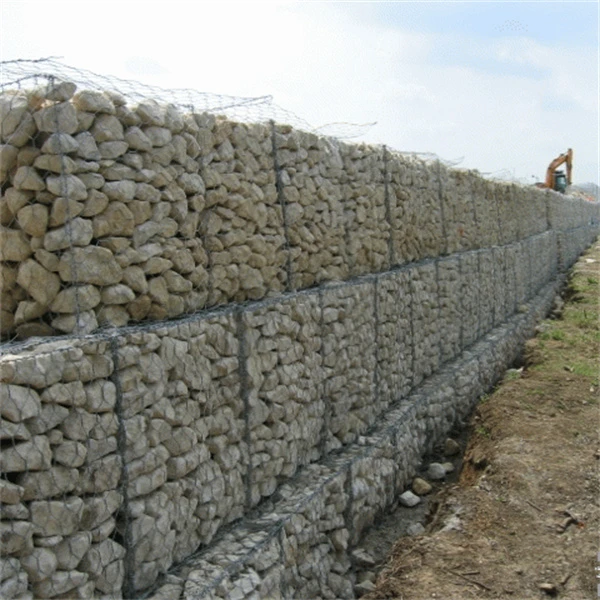Dec . 04, 2024 20:02 Back to list
curved gabion cages
Curved Gabion Cages An Innovative Solution for Erosion Control and Landscaping
As environmental challenges intensify, innovative solutions for erosion control and landscaping are more important than ever. Among these solutions, curved gabion cages stand out as both functional and aesthetically pleasing. These unique structures offer a blend of utility and artistry, making them a popular choice for various applications, from engineering projects to landscape design.
What Are Gabion Cages?
Gabion cages are wire mesh containers filled with stones or other materials, designed primarily for erosion control, retaining walls, and landscaping. Traditionally, these cages come in rectangular shapes, making them suitable for straight surfaces. However, the introduction of curved gabion cages offers new possibilities. By allowing for more organic shapes, curved gabion cages can adapt to the natural contours of a landscape, providing a range of functional and visual benefits.
Benefits of Curved Gabion Cages
1. Enhanced Aesthetics One of the most significant advantages of curved gabion cages is their visual appeal. They can be designed to flow with the terrain, creating a more natural and harmonious look. This is particularly important in landscaping projects where the goal is to blend structures into their surroundings rather than impose upon them.
2. Improved Erosion Control The unique shape of curved gabion cages allows them to follow the natural slope of a hillside or riverbank, providing effective protection against erosion. Their design ensures that water flow is diverted appropriately, reducing the risk of soil degradation and promoting stability.
curved gabion cages

3. Versatility Curved gabion cages can be used in various applications, from residential gardens to large-scale infrastructure projects. They can serve as retaining walls, garden borders, or decorative features in parks and recreational areas. Their versatility makes them a useful tool for landscape architects and engineers alike.
4. Sustainability Using natural materials like stones in gabion cages aligns with sustainable building practices. These structures can often be filled with local materials, reducing transportation costs and environmental impact. Additionally, the use of durable wire mesh ensures that the cages last for many years, minimizing the need for replacement.
5. Ease of Installation Curved gabion cages are relatively easy to install compared to traditional retaining walls. They do not require extensive excavation or foundation work, making them a cost-effective option. This ease of installation allows for quicker project timelines and less disruption to the surrounding environment.
Applications of Curved Gabion Cages
The applications for curved gabion cages are vast. In landscaping, they can create visually striking features, such as curved seating walls or decorative garden borders. In civil engineering, they are often employed to stabilize slopes and prevent erosion along highways, riverbanks, or coastal areas. Additionally, they can be used in urban settings to create noise barriers or attractive fencing solutions.
Conclusion
Curved gabion cages represent a harmonious blend of function and form, providing innovative solutions to some of our most pressing environmental challenges. Their aesthetic appeal, combined with their effectiveness in erosion control and versatility in application, makes them a valuable choice for both landscape architects and engineers. As environmental awareness continues to grow, the demand for sustainable and aesthetically pleasing structures like curved gabion cages is poised to rise. Embracing these innovative solutions can help create resilient landscapes that stand the test of time while enhancing the beauty of our surroundings.
-
Understanding Load-Bearing Capacity of Gabion Boxes
NewsJul.17,2025
-
The Importance of Corrosion-Resistant Wire in Gabion Construction
NewsJul.17,2025
-
How Gabion Boxes Prevent Soil Erosion Effectively
NewsJul.17,2025
-
Environmental Benefits of Gabion Cages
NewsJul.17,2025
-
Best Stone Types for Gabion Walls with Steps
NewsJul.17,2025
-
Benefits of Using Rock Gabion Baskets in Landscaping
NewsJul.17,2025
-
The Role of Galvanized Gabion Mesh in Riverbank Protection
NewsJun.26,2025






